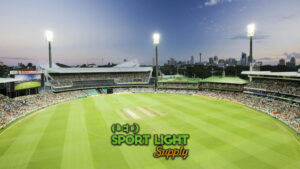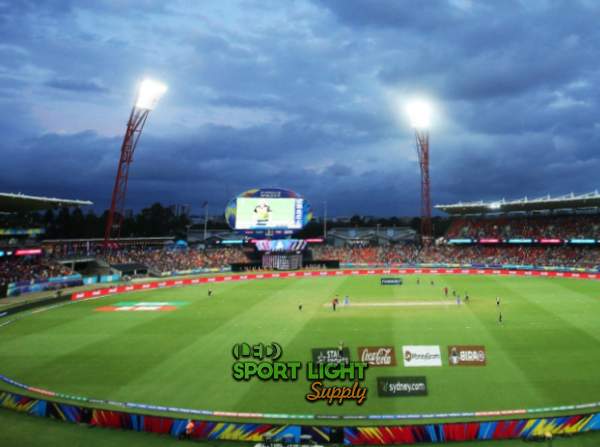
As the sports industry increasingly focuses on sustainability, LED lighting has become a preferred option for illuminating cricket fields. This technology offers distinct advantages, including energy efficiency, durability, and enhanced visibility, which contribute to an improved experience for players, officials, and spectators. Though LED installation requires a higher initial investment, it results in considerable long-term financial savings due to reduced operational and maintenance expenses.
| Item | Description | Cost (USD) |
|---|---|---|
| LED Fixtures | High-intensity LED lights designed for cricket fields. Includes the cost of the fixtures themselves. | $100,000 – $200,000 |
| Poles | Poles required to mount the LED fixtures at appropriate heights for optimal coverage. | $20,000 – $40,000 |
| Electrical Wiring and Installation | Cost for wiring, labor, and installation of fixtures and poles. | $20,000 – $40,000 |
| Annual Energy Costs | Cost of electricity used by LED lights over a year. | $10,000 – $20,000 |
| Annual Maintenance Costs | Includes occasional cleaning, inspections, and minor repairs of LED fixtures. | $2,000 – $5,000 |
| Total Cost of Ownership (10 years) | Cumulative cost of installation, energy, and maintenance over a decade. | $320,000 – $650,000 |
Table of Contents
Toggle
The initial expenditure on LED lighting for a cricket field can be substantial. This investment covers various components, including high-quality LED fixtures, poles, electrical wiring, and labor for installation. The cost of outfitting a cricket field with LED lighting typically ranges between $150,000 and $300,000. The quality of lighting fixtures for cricket fields is paramount, as these lights need to be durable and able to provide consistent, high-intensity illumination for professional play. Unlike traditional lighting solutions, LED technology involves sophisticated components that are designed to withstand outdoor conditions and deliver optimal brightness.
The high initial cost of LED lighting stems from its advanced technology and specialized materials. LED fixtures are engineered for longevity, energy efficiency, and minimal environmental impact. This makes them more expensive upfront than conventional metal halide or high-pressure sodium lights. However, these high-intensity LED lights are particularly suited for cricket fields because they provide uniform illumination across the field, minimizing shadows and glare. The even distribution of light is crucial for players and officials, as it enhances visibility and supports fair play.
Installing LED lighting on a cricket field is a comprehensive process that goes beyond simple fixture placement. A professional installation includes an in-depth assessment of the field’s layout to determine optimal pole placement and alignment for maximum coverage. Engineers and lighting experts analyze factors like field size, intended usage, and potential obstructions to ensure that the setup achieves the desired level of brightness and uniformity. This thorough planning and assessment contribute to the high upfront installation cost, as it involves skilled labor and precision.
One of the most notable advantages of LED lighting is its high energy efficiency. Compared to traditional lighting systems, LED lights consume significantly less electricity—up to 50% less, in many cases. This reduced energy consumption has a direct impact on operational costs, as it lowers the amount of electricity required to maintain adequate lighting for a cricket field. For fields that host frequent matches or practice sessions, this energy efficiency can result in substantial annual savings. Generally, the yearly energy expenditure for LED lighting on a cricket field ranges between $10,000 and $20,000, depending on factors such as field size, frequency of use, and local energy rates.
In addition to financial savings, the lower energy consumption of LED lights benefits the environment by reducing carbon emissions. This aligns with the global push towards more sustainable practices, allowing cricket fields to meet their lighting needs while minimizing their environmental footprint. From a financial standpoint, the energy savings contribute to a lower total cost of ownership over time. While the initial investment in LED lighting is higher, the ongoing operational savings help to offset this expense, making LED technology a sound choice from both environmental and economic perspectives.
LED lighting offers another major advantage: longevity. Unlike traditional lighting systems that often require frequent bulb replacements, LED fixtures can last up to 150,000 hours. This lifespan is significantly longer than that of conventional lights, which may need replacements every 1,000 to 2,000 hours. The extended lifespan of LED lights not only reduces the need for replacements but also minimizes the associated labor and material costs. Cricket field managers can benefit from fewer interruptions and decreased maintenance demands, as LEDs rarely require replacement or repair.
 One of the standout features of LED technology is its low-maintenance nature. Traditional lighting systems, particularly those used in large outdoor venues, often require regular upkeep due to issues like bulb burnout, fixture degradation, and electrical faults. In contrast, LED lighting systems are designed to be robust and reliable, with fewer components that are prone to failure. The annual maintenance costs for LED lighting on a cricket field typically range from $2,000 to $5,000, a fraction of what is needed for traditional lighting setups. This covers minor upkeep tasks, such as occasional cleaning of fixtures and periodic inspections, rather than frequent repairs or component replacements.
One of the standout features of LED technology is its low-maintenance nature. Traditional lighting systems, particularly those used in large outdoor venues, often require regular upkeep due to issues like bulb burnout, fixture degradation, and electrical faults. In contrast, LED lighting systems are designed to be robust and reliable, with fewer components that are prone to failure. The annual maintenance costs for LED lighting on a cricket field typically range from $2,000 to $5,000, a fraction of what is needed for traditional lighting setups. This covers minor upkeep tasks, such as occasional cleaning of fixtures and periodic inspections, rather than frequent repairs or component replacements.
The reliability of LED lighting is a significant benefit, especially for facilities that host regular matches, tournaments, or training sessions. Since LED lights require minimal maintenance, cricket fields can operate without frequent lighting disruptions, ensuring that the field is always ready for play. This reliability is particularly valuable for high-stakes matches and televised events, where lighting consistency is crucial. Moreover, the reduced maintenance requirements free up resources and time for facility managers, allowing them to focus on other aspects of field upkeep and event management.
The financial impact of low maintenance requirements cannot be overstated. In facilities with traditional lighting systems, the cost of regular repairs, replacements, and labor can accumulate over time. By switching to LED lighting, cricket fields can avoid these recurring expenses. The low-maintenance nature of LEDs, combined with their long lifespan, contributes to a lower total cost of ownership. This financial advantage makes LED lighting an attractive choice for cricket fields looking to reduce operational expenses while maintaining high standards of illumination.
While the initial cost of installing LED lighting may seem high, the total cost of ownership over time is generally lower than that of traditional lighting systems. When factoring in reduced energy consumption, lower maintenance expenses, and the extended lifespan of LED fixtures, the long-term financial benefits become clear. Over a period of 10 years, the cumulative savings in energy and maintenance can offset the initial installation cost, resulting in an overall reduction in lighting expenses. This long-term cost efficiency is one of the primary reasons why LED lighting has gained popularity among cricket field managers and sports facilities worldwide.
The improved lighting quality provided by LED fixtures can also have a positive impact on revenue. LED lighting enhances visibility for players, officials, and spectators, creating a better viewing experience. This improvement in the field’s lighting quality can attract more events, tournaments, and audiences, potentially increasing revenue for the facility. In professional sports, the quality of lighting is a key factor that affects television broadcasts and spectator experience, both of which are essential for revenue generation. By investing in LED lighting, cricket fields can position themselves as top-tier venues capable of hosting high-profile matches and attracting larger crowds.
From a financial perspective, LED lighting offers an impressive return on investment (ROI) over the long term. Although the initial cost is higher than that of traditional lighting options, the savings in energy, maintenance, and replacement costs help to recoup this investment. For cricket fields aiming for financial sustainability, LED lighting is a strategic choice that aligns with both economic and environmental goals. By reducing operational expenses and enhancing the quality of play, LED lighting supports the financial viability of cricket fields, allowing them to operate efficiently while maintaining high standards of facility management.
High-quality lighting is essential for player performance and safety on a cricket field. LED lights provide even and consistent illumination, reducing shadows and ensuring that the entire field is uniformly lit. This visibility is crucial for players and officials, as it allows them to react quickly and make accurate judgments during gameplay. Traditional lighting systems often struggle to achieve the same level of brightness and uniformity, especially in larger fields. By investing in LED lighting, cricket fields can enhance the playing experience, which is beneficial for athletes, referees, and spectators alike.
The quality of lighting on a cricket field also affects broadcasting and media coverage. LED lights produce a more natural, glare-free light that improves visibility on camera, making it easier for broadcasters to capture the action. This is particularly relevant for high-profile matches and international tournaments, where lighting quality can impact the viewing experience for millions of fans around the world. With LED lighting, cricket fields can meet the standards required for televised events, positioning themselves as premier venues for professional play.
Investing in LED lighting for cricket fields offers a range of advantages that go beyond initial costs. Although the upfront expenditure may be significant, the energy savings, reduced maintenance needs, and extended lifespan of LED fixtures make it a financially viable choice in the long run. LED lighting not only contributes to the operational efficiency of cricket fields but also enhances the quality of play, spectator experience, and broadcast coverage. By embracing this advanced technology, cricket fields can achieve sustainable operations and financial stability, making LED lighting a smart, forward-thinking choice for modern sports facilities.
Drop us a line to receive a free lighting design